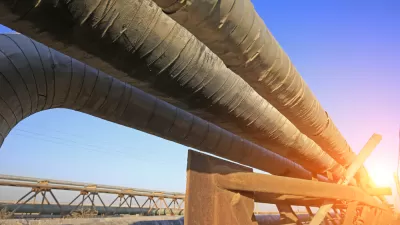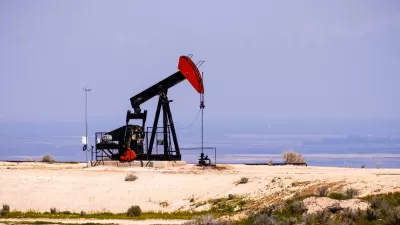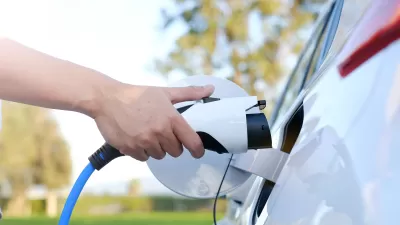Critics of the Trump administration who chide the president for a lack of accomplishments should check the environmental record.

Nadja Popovich, Livia Albeck-Ripka, and Kendra Pierre-Louis share the findings of a recent New York Times analysis, based on research from Harvard Law School, Columbia Law School, and other sources, into the program of environmental deregulation undertaken by the Trump administration during nearly four years in office.
The analysis "counts more than 70 environmental rules and regulations officially reversed, revoked or otherwise rolled back under Mr. Trump," according to the article. "Another 26 rollbacks are still in progress."
The findings of the study corroborate another recent report on the environmental impacts of the Trump administration's policy rollbacks published by the Rhodium Group in September. That report quantified the environmental damage of the Trump administration's policies in metric tons of carbon dioxide—1.8 billion metric tons to be exact.
This latest analysis offers insight into where the Trump administration has achieved the most deregulation, pointing specifically to the U.S. Environmental Protection Agency and the U.S. Department of the Interior.
After including a caveat about the tenuous legal standing of many of the policies implemented by the Trump administration, the article includes a summary of each of the rules targeted for reversal by the Trump administration, organized into the categories of 1) air pollution and emissions, 2) drilling and extraction, 3) infrastructure and planning, 4) animals, 5) water pollution, 6) toxic substances and safety, and 7) other.
In the planning category, the article lists multiple changes pertaining to the National Environmental Policy Act and a decision to rescind the Bureau of Land Management's "Planning 2.0" rule, among other examples.
FULL STORY: The Trump Administration Is Reversing Nearly 100 Environmental Rules. Here’s the Full List.

Maui's Vacation Rental Debate Turns Ugly
Verbal attacks, misinformation campaigns and fistfights plague a high-stakes debate to convert thousands of vacation rentals into long-term housing.

Planetizen Federal Action Tracker
A weekly monitor of how Trump’s orders and actions are impacting planners and planning in America.

In Urban Planning, AI Prompting Could be the New Design Thinking
Creativity has long been key to great urban design. What if we see AI as our new creative partner?

How Trump's HUD Budget Proposal Would Harm Homelessness Response
Experts say the change to the HUD budget would make it more difficult to identify people who are homeless and connect them with services, and to prevent homelessness.

The Vast Potential of the Right-of-Way
One writer argues that the space between two building faces is the most important element of the built environment.

Florida Seniors Face Rising Homelessness Risk
High housing costs are pushing more seniors, many of them on a fixed income, into homelessness.
Urban Design for Planners 1: Software Tools
This six-course series explores essential urban design concepts using open source software and equips planners with the tools they need to participate fully in the urban design process.
Planning for Universal Design
Learn the tools for implementing Universal Design in planning regulations.
Gallatin County Department of Planning & Community Development
Heyer Gruel & Associates PA
JM Goldson LLC
City of Camden Redevelopment Agency
City of Astoria
Transportation Research & Education Center (TREC) at Portland State University
Jefferson Parish Government
Camden Redevelopment Agency
City of Claremont





























